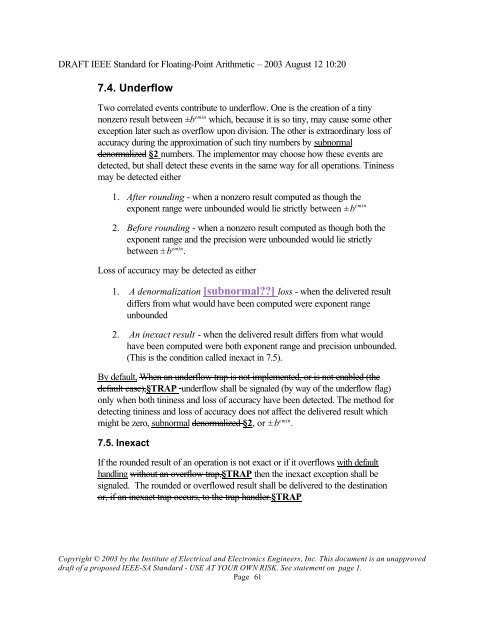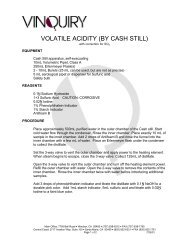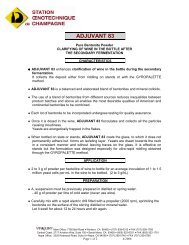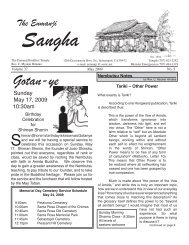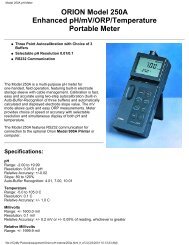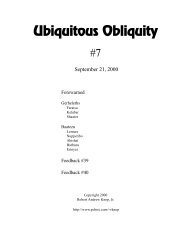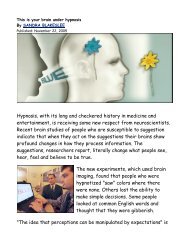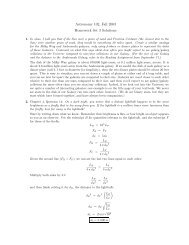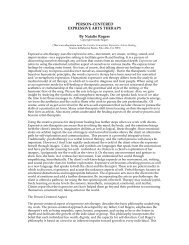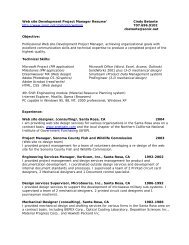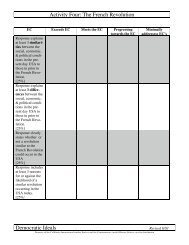DRAFT IEEE Standard for Binary Floating-Point Arithmetic - Sonic.net
DRAFT IEEE Standard for Binary Floating-Point Arithmetic - Sonic.net
DRAFT IEEE Standard for Binary Floating-Point Arithmetic - Sonic.net
Create successful ePaper yourself
Turn your PDF publications into a flip-book with our unique Google optimized e-Paper software.
<strong>DRAFT</strong> <strong>IEEE</strong> <strong>Standard</strong> <strong>for</strong> <strong>Floating</strong>-<strong>Point</strong> <strong>Arithmetic</strong> – 2003 August 12 10:20<br />
7.4. Underflow<br />
Two correlated events contribute to underflow. One is the creation of a tiny<br />
nonzero result between ±b emin which, because it is so tiny, may cause some other<br />
exception later such as overflow upon division. The other is extraordinary loss of<br />
accuracy during the approximation of such tiny numbers by subnormal<br />
denormalized §2 numbers. The implementor may choose how these events are<br />
detected, but shall detect these events in the same way <strong>for</strong> all operations. Tininess<br />
may be detected either<br />
1. After rounding - when a nonzero result computed as though the<br />
exponent range were unbounded would lie strictly between ± b emin<br />
2. Be<strong>for</strong>e rounding - when a nonzero result computed as though both the<br />
exponent range and the precision were unbounded would lie strictly<br />
between ± b emin .<br />
Loss of accuracy may be detected as either<br />
1. A denormalization [subnormal??] loss - when the delivered result<br />
differs from what would have been computed were exponent range<br />
unbounded<br />
2. An inexact result - when the delivered result differs from what would<br />
have been computed were both exponent range and precision unbounded.<br />
(This is the condition called inexact in 7.5).<br />
By default, When an underflow trap is not implemented, or is not enabled (the<br />
default case),§TRAP underflow shall be signaled (by way of the underflow flag)<br />
only when both tininess and loss of accuracy have been detected. The method <strong>for</strong><br />
detecting tininess and loss of accuracy does not affect the delivered result which<br />
might be zero, subnormal denormalized §2, or ± b emin .<br />
7.5. Inexact<br />
If the rounded result of an operation is not exact or if it overflows with default<br />
handling without an overflow trap,§TRAP then the inexact exception shall be<br />
signaled. The rounded or overflowed result shall be delivered to the destination<br />
or, if an inexact trap occurs, to the trap handler.§TRAP<br />
Copyright © 2003 by the Institute of Electrical and Electronics Engineers, Inc. This document is an unapproved<br />
draft of a proposed <strong>IEEE</strong>-SA <strong>Standard</strong> - USE AT YOUR OWN RISK. See statement on page 1.<br />
Page 61


